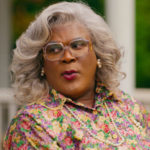“The Rachel Divide” Graded with DaVinci Resolv
July 5, 2018, 02:37 PM
https://www.aotg.com/the-rachel-divide-graded-with-davinci-resolv/
Toby Martisius has been a post production pro for more than 15 years. He is a freelance Colorist, working out of some of the best post facilities in Los Angeles. His website, artisus.tv showcases samples of some of his latest work. His credits include more than a 100 projects, including everything from award winning films, like “Jasmine†a psychological thriller in Hong Kong, and the first Hollywood production to be filmed in Havana, Cuba since the 1959 revolution, “Papa Hemingway in Cubaâ€. Also many TV shows like “Idiot Sitter†and “Big Time in Hollywood, FL†to national TV spots for brands such as Taco Bell, Bud Light and State Farm. For six of his 15 years, he has been grading solely on DaVinci Resolve. And for his most recent film, a Netflix original “The Rachel Divide,†he relied on DaVinci Resolve’s extensive features and power to handle grading a film whose very subject was focused on skin tone. The new controversial film, which just premiered at The TriBeCa Film Festival, and is now streaming on Netflix “The Rachel Divide,†focuses on Rachel Dolezal, who had become a social phenomenon after it was discovered she had passed herself off as an African American and became the head of her local N.A.A.C.P. chapter. Filmmaker Laura Brownson followed Dolezal and her family over the course of two years as they struggled to deal with the public scrutiny, and living under a microscope. How Toby Graded “The Rachel Divide†Working with director Laura Brownson and DP Jerry Henry, Toby used DaVinci Resolve for color correction, conforming and online editing where needed. To start with on any project, Toby always focuses on finding hero shots for each scene and designing a look around those. For “The Rachel Divide,†the director wanted the film to be full of color in every scene. For a colorist, working with skin tones and maintaining a specific look and feel to every frame is a primary task for most projects. For a film where skin tone was an actual part of the narrative, how Toby handled this task became hugely important. Toby said: “Skin tones were a large focus after the looks were set for each particular scene, and surrounding story. Particularly ironic, given the subject matter. We focused on making our scenes pop, and then adjusted skin tones to look natural within our desired looks.†“I had a great time working with Laura on this doc. It was very interesting to explore the color of skin tones in this film. I actually thought more about analyzing skin than any other previous film. I explored the subtle hues in skin tonality, in combination with lighting conditions, and the protagonist’s desire to appear darker than natural. It's interesting to note that technically all of our skin tones fall along the same line, interpreted by the computer's digital vectorscope. So basically skin color is vector blind. Go figure. It was more challenging, in some ways than previous narratives I’ve colored. There was a great deal of attention applied to secondary color corrections with regard to the skin tones, especially for Rachel. Laura Brownson and Jerry Henry and I had to concentrate on her hues and tones more specifically.†To help adjust skin tones, Toby used HSL keys in DaVinci Resolve, and motion tracked Power Windows. He combined this with parallel and layer nodes in order to further isolate the skin, without affecting the overall approved look. He also relied on the software’s powerful luma key features, along with parallel and layer nodes, to individually affect specific elements of the image while pushing the colorful look. In the end, Toby’s work ended up being more about color correction for the action than around skin tone alone. “Yes the skin tone work turned out to not just be a concern, but also a truth telling point. We were designing looks for each scene that we wanted to pop with color and saturation, but would quickly see that it exaggerated skin tone to the point of it being a distraction. So when we fell in love with a look for the scene, we pretty much had to do a separate skin pass, in order for her to look more naturally balanced in the environment. It was definitely a challenge,†he said. He continued: “Documentaries are inherently more hands on, and I believe Resolve helped immensely with it’s enhanced edit capabilities. It’s ability to alter metadata, changing Clip Attributes, to use the Force Conform option when necessary to override, or to solve a connection problem in order to work around a timecode challenge. And all the while collaborating on a shared network simultaneously, with a tight deadline, as I colored the film in the theater at Local Hero Post.â€Â “For me, it’s all about finding an emotional connection to the film’s characters and giving their story the look it needs to communicate the filmmakers’ message. My grade, and sense of style provide an added value to final picture, and I am the last artist to creatively affect the movie or tv show, before distribution,†Toby said.“The Rachel Divide”: Colorist and VFX Artist Toby Martisius Grades New Documentary with DaVinci Resolve
#davinci resolve#post production#colorist
Newest from AOTG.com
-

Daniel George McDonald on Editing Cheer's Season 2 Finale
Daniel George McDonald sits down to discuss creating the finale for Cheer Season 2.
-

Editing The Black Lady Sketch Show
Gordon sits down with the editorial team of The Black Lady Sketch Show to discuss their approach to ...
-

Philip White on Crafting A Madea Homecoming's Music
Gordon sits down with Philip to discuss his work with Tyler Perry and his latest film A Madea Homeco...
Site Links
Tools
Sister Sites
© 2007-2025 www.aotg.com Ver. 3.0 All Content created and posted by Art of the Guillotine users Art of the Guillotine graphics, logos, designs, page headers, button icons, scripts, and other service names are the trademarks of Art of the Guillotine Inc. Use of this material outside of this site is strictly prohibited.